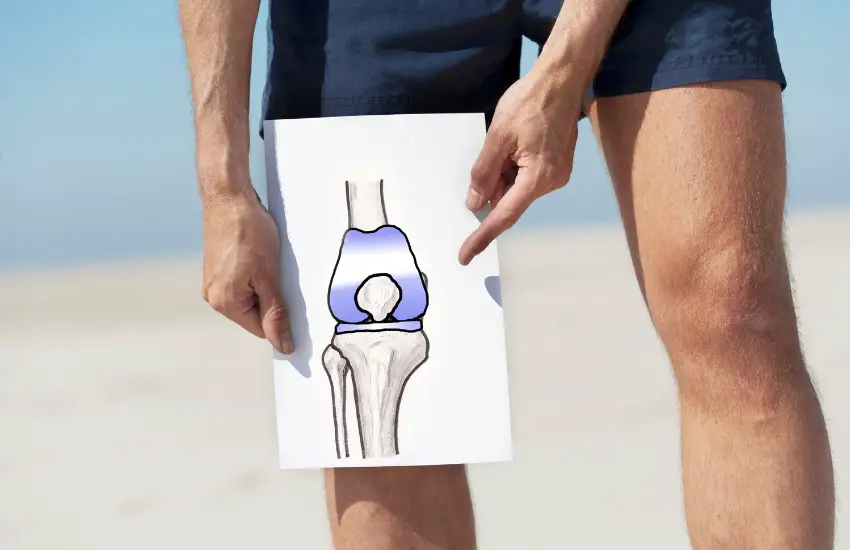Hiking After Knee Replacement (Is It Possible?)

So you’ve just undergone knee replacement surgery, and you’re wondering if you can get back to your favorite activity – hiking? Well, the answer is YES! But, of course, there are a few things you need to keep in mind before you hit the trails.
First off, let’s quickly go over what knee replacement surgery is. It’s a procedure that involves replacing a damaged knee joint with an artificial one to reduce pain and improve mobility. It’s a pretty common surgery, and the recovery process can take some time, but it’s worth it. And here’s where hiking comes in! Physical activity is crucial for your recovery, and hiking is an excellent way to get moving while enjoying the great outdoors.
Now, I know you’re eager to get started, but let’s take a look at what this article will cover, so you can be fully prepared to hit the trails again. We’ll go over the timeline for when it’s safe to start hiking, tips for preparing for your hike, techniques for hiking with a knee replacement, how to manage pain and discomfort, the benefits of hiking after surgery, and the precautions and limitations to keep in mind. So, let’s lace up those hiking boots and dive in!
Understanding Knee Replacement Surgery And It’s Recovery Process
Alright, let’s get into the nitty-gritty of knee replacement surgery and what you can expect during the recovery process.
So, the surgery itself involves removing the damaged parts of the knee joint and replacing them with an artificial joint. It’s a big procedure, but the benefits are significant – reduced pain and improved mobility. Of course, like any surgery, there are some risks involved according to MayoClinic, such as blood clots, infections, or nerve damage, but your doctor will go over all of these with you before the surgery.
Now, let’s talk about the rehabilitation process. This is a crucial part of your recovery and involves physical therapy to help you regain strength and mobility in your knee. Your doctor will likely provide you with a rehabilitation plan, which may include exercises, stretches, and mobility drills. It’s essential to stick to this plan and follow your doctor’s instructions, as this will ensure the best possible outcome for your recovery.
So, there you have it – knee replacement surgery and the recovery process in a nutshell. It’s important to remember that every person’s experience will be different, so don’t be afraid to ask your doctor any questions you may have along the way. Next up – when can you start hiking?
When Is It Safe To Start Hiking Again After Knee Replacement Surgery?
Okay, so now that we’ve gone over the surgery and recovery process, let’s talk about when it’s safe to start hiking again. After all – this is what you came for!
Firstly, your doctor will play a significant role in determining when it’s safe for you to start hiking. They’ll take into account your age, fitness level, overall health, and the type of surgery you had. Generally, you’ll want to wait at least six to eight weeks after surgery before starting any physical activity, but this can vary (sometimes greatly) from person to person.
Your fitness level will also play a role in determining when it’s safe to start hiking. If you were an avid hiker before your surgery, you may be able to start hiking again sooner than someone who was less active. However, it’s crucial to take it slow and listen to your body.
Lastly, it’s essential to consult with your doctor before starting any physical activity. They’ll be able to give you specific advice and guidance based on your unique situation. They may also recommend physical therapy to help you prepare for hiking and ensure you’re ready to hit the trails safely.
Preparing for a Hike After Knee Replacement Surgery
Alright, now that we’ve talked about when it’s safe to start hiking, let’s discuss how to prepare for your first hike after knee replacement surgery.
It’s crucial to strengthen the muscles around your knee before hiking. This will help to support your knee joint and reduce the risk of injury. Your physical therapist will likely provide you with exercises to help strengthen these muscles, such as leg presses, squats, and calf raises. Be sure to stick to your exercise plan, as this will help prepare you for hiking.
When it comes to choosing hiking gear and equipment, there are a few things to keep in mind. Firstly, you’ll want to make sure you have proper footwear with good support and traction. This will help to reduce the impact on your knee and provide stability while hiking. Additionally, you may want to consider using trekking poles to help with balance and support.
Hiking Techniques for People with Knee Replacements
Next, let’s cover some specific hiking techniques that can help reduce the impact on your knee joint and make your hike more enjoyable.
Firstly, it’s important to take breaks and pace yourself. This will help to prevent fatigue and reduce the risk of injury. Take frequent breaks to rest and stretch your legs, and be sure to stay hydrated.
Using a knee brace and trekking poles can also be beneficial for people with knee replacements. A knee brace can provide additional support to your knee joint while trekking poles can help to reduce the impact on your knee and improve your balance. Be sure to use these tools properly and adjust them as needed.
When it comes to choosing a hiking trail, you’ll want to look for something that is suitable for your fitness level and the condition of your knee. Avoid steep or rocky terrain, and look for trails that are relatively flat and well-maintained. Additionally, be sure to check the weather conditions and plan accordingly.
Managing Pain and Discomfort While Hiking After Knee Replacement Surgery
Now, let’s talk about managing any pain or discomfort you may experience while hiking after knee replacement surgery.
It’s normal to experience some pain and swelling during and after a hike, but there are ways to manage this discomfort. Firstly, be sure to stretch and warm up properly before your hike, and cool down and stretch afterwards. This can help to reduce stiffness and soreness in your knee joint.
You may also want to consider taking over-the-counter pain medication, such as ibuprofen or acetaminophen, before your hike to help manage pain and swelling. Be sure to talk to your doctor before taking any medication, as they can advise on the appropriate dosage and any potential side effects. It’s very similar to the sciatica pain I deal with when I hike.
If you experience any significant pain, swelling, or other symptoms during your hike, it’s important to stop and rest. Take a break and elevate your leg to reduce swelling. If your symptoms persist or worsen, seek medical attention right away.
Benefits of Hiking After Knee Replacement Surgery
Hiking after knee replacement surgery offers many benefits beyond just physical activity. It’s well-known that physical activity is important for overall health and well-being, but it’s especially important for people recovering from knee replacement surgery. Hiking can help to increase range of motion, reduce stiffness, and strengthen the muscles around the knee joint.
Additionally, hiking can aid in the recovery process by improving cardiovascular health and increasing bone density. By getting your heart rate up and putting weight on your legs, you’re helping to increase blood flow and stimulate bone growth. This can be especially important for people with osteoporosis or other bone-related conditions.
But hiking isn’t just good for your physical health – it can also have positive effects on your mental health. Spending time in nature and getting fresh air can help to reduce stress and anxiety, boost your mood, and improve overall mental well-being. It’s a great way to disconnect from the hustle and bustle of everyday life and reconnect with yourself and the natural world around you.
So, if you’re considering hiking after knee replacement surgery, know that it offers a wide range of benefits beyond just physical activity. Whether you’re looking to improve your recovery, boost your mental health, or just enjoy the great outdoors, hiking is a fantastic way to get moving and feel good.
Precautions and Limitations for Hiking After Knee Replacement Surgery
While hiking after knee replacement surgery can be a great way to stay active and enjoy the outdoors, it’s important to take precautions and be aware of your limitations.
Before your hike, make sure you have properly warmed up and stretched your muscles, and don’t forget to wear appropriate footwear and clothing. It’s also important to bring plenty of water and snacks to stay hydrated and fueled during your hike.
During your hike, like I mentioned before, take breaks and pace yourself to avoid overexertion. It’s important to listen to your body and stop if you experience any significant pain or discomfort.
It’s also important to be aware of the limitations of hiking for people with knee replacements. Depending on your specific condition and recovery process, you may need to avoid steep or uneven terrain, or limit the distance and intensity of your hikes. Be sure to talk to your doctor about any limitations or precautions you should take before starting a hiking routine.
Finally, it’s important to set realistic goals and expectations for yourself. Don’t push yourself too hard or try to do too much too soon. Start with shorter, easier hikes and gradually increase the distance and intensity over time. Remember, the most important thing is to stay active and enjoy the experience.
Conclusion
In conclusion, hiking after knee replacement surgery can be a safe and enjoyable way to stay active and aid in the recovery process.
While it’s important to consult with your doctor and take precautions, don’t be afraid to gradually incorporate hiking into your recovery routine. With the right preparation, technique, and mindset, hiking can offer a wide range of benefits for both physical and mental health. So, grab your gear, hit the trails, and enjoy the trails!







